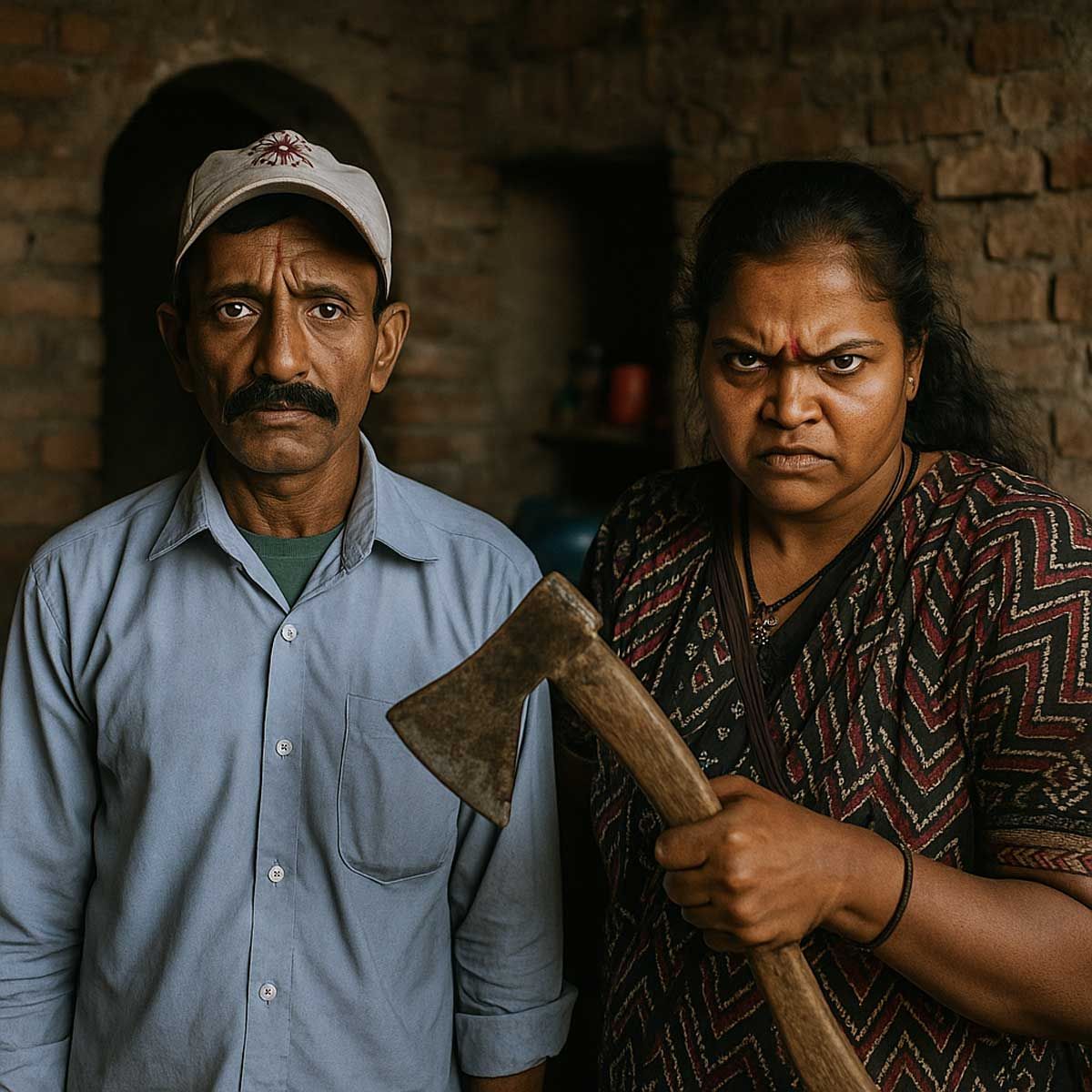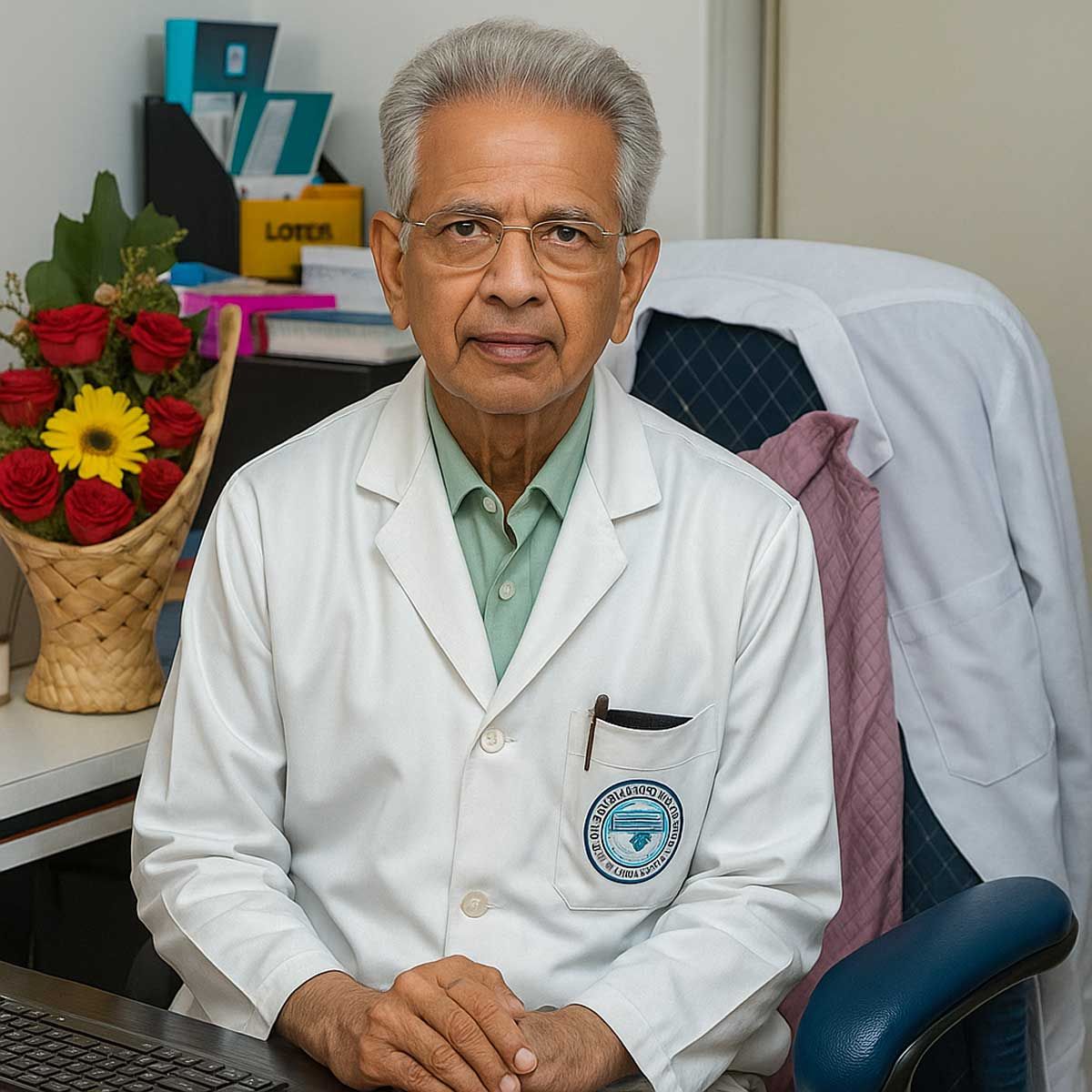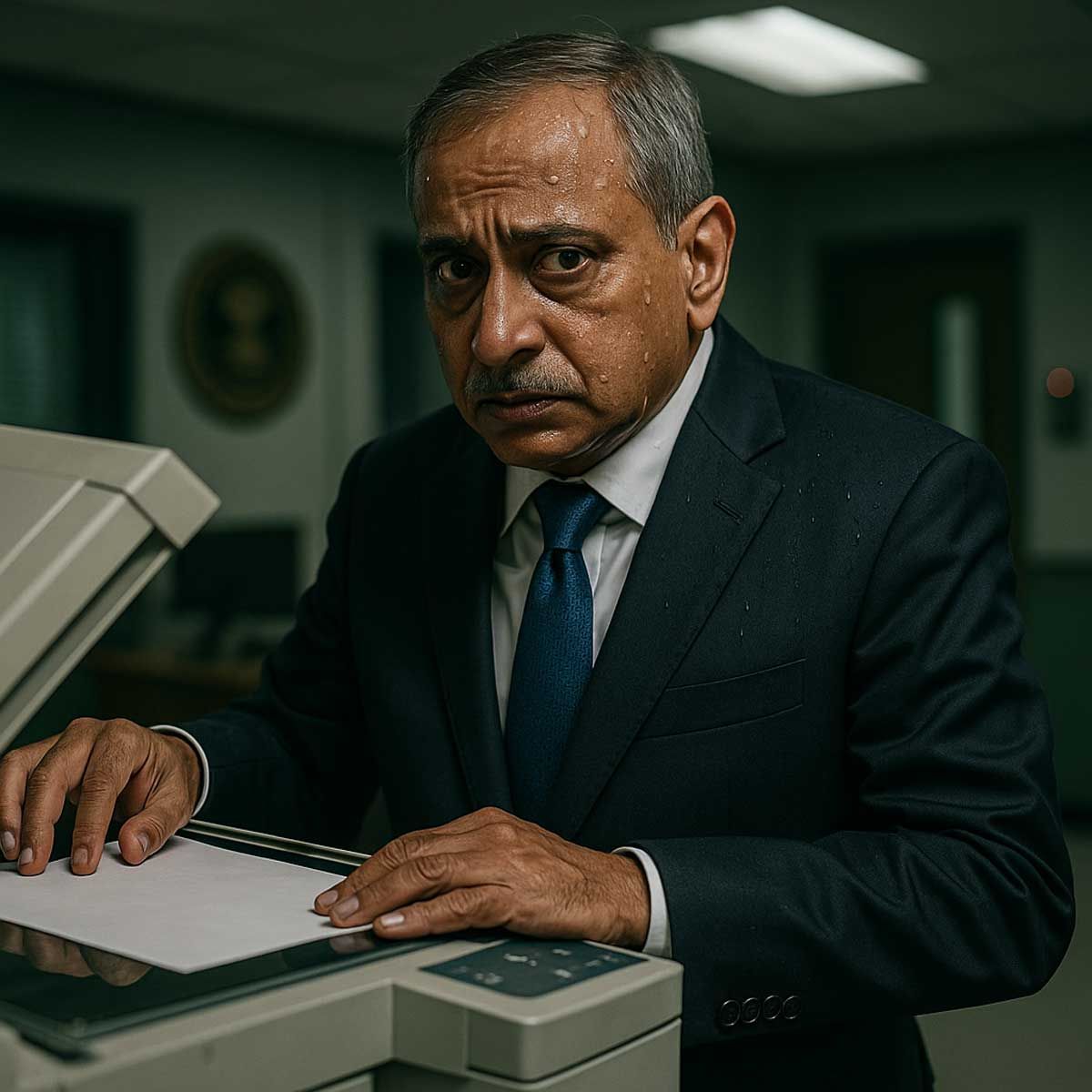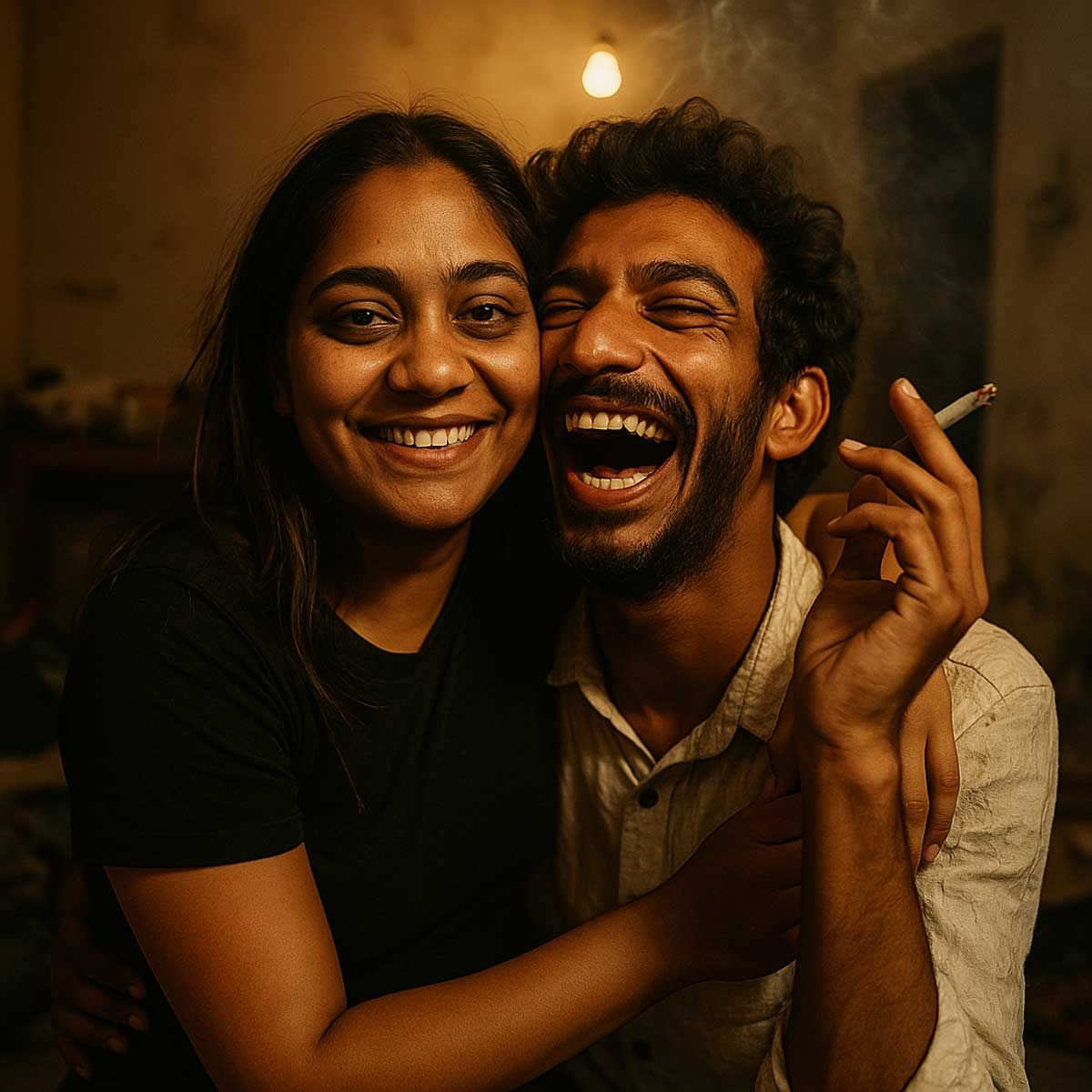More Coverage
Twitter Coverage
Satyaagrah
Written on
Satyaagrah
Written on
Satyaagrah
Written on
Satyaagrah
Written on
Satyaagrah
Written on
JOIN SATYAAGRAH SOCIAL MEDIA
"Symbols are powerful because they are the visible signs of invisible realities": ‘Sengol’ representing fair & equitable governance will shine in the new Parliament as a national symbol of Amrit Kaal, an era of India taking its rightful place in the world

History will repeat itself on Sunday when the new Parliament House will be dedicated to the nation. On this day, Honorable Prime Minister Shri Narendra Modi will receive the sacred symbol of fair and equitable governance, Sengol, and install it in the new Parliament House. This is the same Sengol that was accepted by the first Prime Minister of India, Shri Jawaharlal Nehru at his residence on the night of 14th August, in the presence of several leaders.
Recalling the entire event that took place on the occasion of India's independence, Home Minister Shri Amit Shah said, “Even after 75 years of independence, most of the people in India are not aware of this event in which India's transfer of power took place through handing over of Sengol to Pt Jawaharlal Nehru. It was a special occasion on the night of August 14, 1947, celebrating India's independence. On this night Jawaharlal Nehru received the 'Sengol' from the Adheenams (Priests) of the ThiruvaduthuraiAdheenam (Mutt) in Tamil Nadu, who had specially arrived for the occasion. It was precisely the moment in which power was transferred by the British into the hands of Indians. What we are celebrating as independence is actually marked by the very moment of handing over the 'Sengol'.
The Hon’ble Prime Minister took a decision to adopt the Sengol as a national symbol of the Amrit Kaal. The new building of Parliament will witness the very same event, with Adheenam(Priests) repeating the ceremony and vesting the Hon’ble PM with the Sengol.
The Home Minister further elaborated on the Sengol and said, “The Sengol is profound in meaning, which is derived from the Tamil word “Semmai”, meaning “Righteousness”. It is blessed by the high priests of a leading Dharmic Mutt in Tamil Nadu. The Nandi, with its unyielding gaze as the beholder of “Nyaya”, is hand-carved at the top. Most importantly, the recipient of the Sengol has the “order” (“Aanai” in Tamil) to rule justly and fairly. This is what is most appealing, for those elected to serve the people must never forget this.”
The same Sengol from 1947 will be installed by the Hon’ble Prime Minister in the Lok Sabha, prominently close to the Speaker’s podium. It will be displayed for the Nation to see and will be taken out on special occasions.
Home Minister Shri Amit Shah said that the Parliament House is the most appropriate and sacred place to install the historic "Sengol".
The establishment of "Sengol", makes the spirit of 15 August 1947 unforgettable. It is the symbol of the promise of boundless hope, boundless possibilities, and a resolve to build a strong and prosperous nation. It will be a symbol of the Amrit Kaal, which will witness the glorious era in which India will be taking its rightful place.
The Tamil Nadu government has proudly published the role played by the Mutts of the State in the Hindu Religious& Charitable Endowments Department (HR&CE) Policy Note of 2021-22. Para 24 of this document clearly highlights the role played by the Mutts as Royal Counsel.
This historic plan has been prepared in consultation with the presidents of Adheenam. All 20 Adheenam presidents will also be present on this auspicious occasion to shower their blessings in reminiscence of this sacred ritual. I express my gratitude to them. I am glad that 96-year-old Shri WummidiBangaruChettyji, associated with its construction, will also participate in this sacred ceremony. I express my gratitude to him.
A special website (sengol1947.ignca.gov.in), with details and downloadable videos about the Sengol, was launched by the Home Minister at the event today. He said, “We want the people of India to see this and learn about this historic event. It is a matter of pride for all.”
Union Minister for Culture and Tourism, Shri G Kishan Reddy, Union Minister for Information and Broadcasting and Youth Affairs & Sports, Shri Anurag Singh Thakur, and Secretary, Ministry of Culture, Shri Govind Mohan were also present in the press conference.
The last Viceroy, Earl Mountbatten, came to India with a specific mandate - to hand over power to Indians and enable the British to exit India as quickly as possible. He asked the soon-to-be Prime Minister, Jawaharlal Nehru how should this moment of handover be conducted? What is the symbolism that should be adopted to mark the transfer of power?
The transfer of power from British to Indian hands
The last Viceroy, Earl Mountbatten, came to India with a specific mandate - to hand over power to Indians and enable the British to exit India as quickly as possible. He asked the soon-to-be Prime Minister, Jawaharlal Nehru how should this moment of handover be conducted? What is the symbolism that should be adopted to mark the transfer of power?
Nehru turned to the veteran freedom fighter from Tamil Nadu, Shri C Rajagopalachari. Nehru respected Rajaji’s erudition and knowledge of Indic customs. Rajaji, as he was popularly known, found the answer in India’s past. In the traditions of the Chola kingdom of Tamil Nadu. The Cholas were one of India’s greatest and oldest rulers. To mark the transfer of power, a new ruler accepted a Sengol, the staff of righteousness, from the head priest. Rajaji suggested that Nehru may accept a similar Sengol from Mountbatten. Nehru agreed and assigned the task to Rajaji.
A symbol inspired by India’s greatest empire: The transfer of power from one Chola king to another was marked by the handing over of the Sengol, the unbending, intricately carved, golden staff. It was surmounted by the divine bull, Nandi, the vehicle of Lord Shiva. Nandi is a symbol of justice. Blessed by the high priests of the time, invoking the blessings of Lord Shiva, the Cholas being His ardent devotees, the Sengol was passed on to the new King. Worship continues in their millennium-old temples to this day.
The Adheenams – a non-brahmin Saivite order – date back over five hundred years. The transfer of Power during Chola times was sanctified by Saivite high priests. Shri Rajagolachari requested the leader of the Thiruvavaduthurai Adheenam in Tamilnadu to do the same, for Power to pass on to Indian hands. The Adheenam deputed a team to Delhi in Aug 1947 to perform this task.
Rajaji contacted the leading Dharmic Math, the Thiruvavaduthurai Adheenam, established over five centuries prior, located in the heart of Chola land, functioning to this day. The then Seer, the 20th Guru Mahasannidhanam Sri La Sri Ambalavana Desika Swami, who was ailing at the time, accepted the task. He commissioned the making of the Sengol to the famous jeweler, Vummidi Bangaru in Madras. He then assigned his deputy, Sri La Sri Kumaraswamy Thambiran to go to Delhi with the Sengol and conduct the ceremonies along with the Adheenam’s Oduvar (special singer) Sri Manickam and the famous player of the nadaswaram, Shri Rajarathinam Pillai. The delegation reached Delhi on a special flight.
Crafted by Vummidi, a famous jeweler of Madras.
Adheenam assigned us the job to design The Sengol. It was made in silver with gold plating. A team of 10 Gold Craftsmen took 10-15 days to complete The Sengol. That we were assigned a task associated with such a momentous occasion, was a matter of great pride for us. We performed a small pooja before handing over the Sengol.
A masterpiece of Indian art: The Sengol is an exquisite piece, painstakingly and lovingly created. It measures 5 feet, with rich workmanship from top to bottom.
The Sengol’s orb which symbolizes the world of the people, is surmounted by a beautiful carving of the Nandi, the vahana and gatekeeper of Lord Shiva. The Nandi, with the unyielding gaze, is the protector and vehicle of dharma or justice.
India’s new leader accepts the Sengol: Sri La Sri Thambiran handed over the Sengol to Lord Mountbatten, who handed it back. The Sengol was purified by sprinkling holy water on it. Sri La Sri Thambiran then took the Sengol to Nehru’s residence to conduct the ceremonies and hand over the Sengol to the new ruler, in the presence of many stalwart leaders of the freedom movement. Thus, the transfer of power from British to Indian hands took place with a symbol from a thousand years ago, as per civilizational practice. In a remarkable integration of the South and the North, the event and the symbol commemorated the birth of the nation as one. The Sengol truly deserves an honored place in history.
The world’s media took note: The event was reported extensively in local publications of India. The symbol and its significance were duly noted by journalists of the international media as well. TIME magazine of August 25th 1947 carried a detailed report.
India’s tryst with destiny
Nehru accepted the Sengol as a symbol of the transfer of power, for the successful future for the new nation. He then went on to deliver his famous address at the midnight hour of August 14th, 1947.
"In the country of the King who sways his Sengol with justice, seasonal timely rain and plentiful crops will ever dwell together." - Thiruvalluvar
The Adheenams custodians of Shavite Traditions
The Adheenams not only enjoyed the patronage of Kings but also received their royal grants. The Thiruvavaduthurai Adheenam is a renowned Math in Mayiladuthurai District, Tamil Nadu. Situated in the heart of Chola Nadu in the fertile Kaveri delta, it is one of 18 venerated maths spread across Tamil Nadu.
The Adheenams are fervent upholders of Shaivism, preservers of traditions, and nurturers of the Tamil language, conforming to the saying, ‘Saivamum Thamizhum Thazhaitini Onguga.’ Which means, ‘Let the glory of Lord Shiva and Tamil reach great heights without ever bending.’
 |
| The 23 illustrious Heads of the Thiruvavaduthurai Adheenam |
500 Years of Heritage in the Service of the People
The Thiruvavaduthurai Adheenam, founded in the late 15th century by Srilasri Namachiivaya Murthigal, is a non-Brahmin Dharmic math that has been continuously serving its followers for over 500 years. The 23rd Guru Mahasannidhanam or Head of the Math is in service now.
In 1947, the then-head of the Thiruvavaduthurai Adheenam, Sri La Sri Ambalavana Desika Swami was ailing. However, he undertook the important task and agreed to arrange the transfer of power, much like what the Chola kings of a thousand years earlier would have done. He ordered and commissioned the making of the Sengol to Vummidi, a famous jeweler in Madras, and even specified the design.
After the Sengol was produced by the master craftsmen of the then Madras Presidency, Sri La Sri Ambalavana Desika Swami deputed his second-in-command, Sri La Sri Kumaraswamy Thambiran, the Math Odhuvar (singer) Shri Manickam, and the Nadaswaram vidwan, Shri T N Rajarathinam Pillai to go from Mayiladuthurai in Tamil Nadu to India’s capital, New Delhi, with the Sengol and perform the ceremony to mark the transfer of power. This delegation from the Thiruvavaduthurai Adheenam in Mayiladuthurai, Tamil Nadu, flew to New Delhi in a special aircraft.
Sri La Sri Kumaraswamy Thambiran handed the Sengol to Lord Mountbatten, who handed it back. The seer then sprinkled holy water on it. On August 14th, just before the midnight hour, Sri La Sri Kumaraswamy Thambiran handed the Sengol, the scepter inspired by the tradition of the imperial Cholas, to Shri Jawaharlal Nehru, soon to be the first prime minister of independent India. In a solemn ceremony, Nehru accepted this timeless symbol of authority, to the singing of the Math Odhuvar and the lilting notes of the Nadaswaram maestro.
It is not an exaggeration to note that the Adheenams not only contributed to the takeover of power from the British through the glorious heritage of our nation but also marked the birth of a free India as it began its march toward the future with great confidence and even greater aspiration.
Kolaru Padhigam Curbing Ill-Effects
Tamil poet saint Thirugnanasambandar wrote and sang the verses called “Kolaru Padhigam” in the seventh century CE, as a prayer to remove difficulties. The Adheenam priests rendered this song when the Sengol was handed over to Pt Jawaharlal Nehru on Aug 14, 1947. The transfer of power was thus blessed. Join | t.me/SatyaagrahIndia.
Among the oldest compositions in Tamil in praise of Lord Shiva is the Kolaru Padhigam, composed by the Tamil saint Thirugnanasambandhar, who was among the most prominent of the 63 Nayanmars, the saintly devotees of Lord Shiva, who lived in the period, 6th to 8th century CE. Thirugnanasambandhar, reported to have lived in the 7th century, lived only till age 16. He was so prolific that he composed hundreds of verses in praise of Lord Shiva.
One such verse is the Kolaru Padhigam, a prayer to Lord Shiva, to mitigate the ill effects of unfavourably placed celestial bodies and planets. The words Kolaru Padhigam have a meaning. ‘KOLL’ means a celestial body revolving around a star & ‘ARU’ means to cut. ’KOLARU’ means the cutting or mitigation of the ill effects of positions of celestial & planetary bodies, ‘PADHIGAM’ means a poem in praise of a deity.
On Aug 14th 1947, when Pandit Jawaharlal Nehru took over power by receiving the Sengol, the challenges in front of free India were many. The then seer, 20th Guru Mahasannidhanam, Sri La Sri Ambalavana Desika Swami, prescribed the singing of the Kolaru Padhigam, to overcome hurdles caused by the planetary positions. Special Odhuvar Sri Manickam, from Tamil Nadu, rendered the song during the handover, with Shri Rajarathinam Pillai playing the mangalavadhyam.
Thus bestowed with the benediction of the Kolaru Padhigam, an ancient civilization met its tryst with destiny, and commenced its journey as a free nation.
The Cholas - One of the Greatest Empires in Indian History
EPOCH-MAKING RULERS The Pride of India One of the longest-running dynasties in the Indian sub-continent were the Cholas. They reached their zenith in the early medieval era. They made stunning contributions to architecture, art, music, literature, administration, seafaring, and trade. It was the golden era of the Tamils. The earliest Cholas are mentioned in the inscriptions of Emperor Ashoka as being the kingdom just South of Kalinga. They are also referred to in the ancient Sangam literature.
Despite these ancient origins, the rise of the Chola Empire is noted with the ascent of Vijayalaya Chola in the year 848 CE. He started the Chola tradition of building temples during his reign. A remarkable tradition that resulted in the building of more than 300 temples, across the dynasty. Many of these are still standing tall today, more than 1000 years later.
The Brihadeeswarar temple at Thanjavur, the Gangaikonda Cholapuram temple at Gangai Konda Cholapuram, and the Airavateswarar temple at Dharasuram, together find their place as Great Living Chola Temples, a part of World Heritage sites. In the words of a reputed historian “The Chola artists conceived like giants and crafted like jewellers!”
The Brihadeeswarar Temple - The Zenith of Tamil Temple Architecture | The greatest of them all is the Brihadeeswara Temple in Thanjavur, dedicated to Lord Shiva. It was built by the 8th in reign, Rajaraja Chola, as the Cholas were devout Shaivites. It is the largest and tallest of all Indian temples, at the apex of South Indian architecture. It is estimated that 130,000 tons of granite was used in the construction of the temple. Granite that was not available locally. Rajaraja Chola also developed better irrigation systems to improve the agricultural economy.
Gangaikonda Cholapuram | The Chola army under Rajendra Chola marched up the Orissa coast, entered Bengal, reached the river Ganga, and defeated King Mahipala. He returned and built a new capital, Gangaikonda Cholapuram.
While the Kaveri delta was the heartland of the Chola Kingdom, under Rajaraja the Chola empire stretched from Polonnaruva in Sri Lanka, all the way to the Tungabhadra River in the North, and upto Dandabhukti in Bengal in the East. To commemorate this victory, he built the refined Gangai Konda Cholapuram temple.
The Cholas were a thalassocratic dynasty, holding sway over sea and land. In 1025 CE Rajendra Chola I, the son of Rajaraja Chola launched successful naval expeditions to far away Sumatra and the Malayan peninsula, which were more than 3000 km away. This was more than 5 centuries before the Europeans started exploring the world on their ships. Soon, the empire also included the whole of Sri Lanka, Maldives, and more. In fact, the influence of the Cholas can be seen across South East Asia, judging by the numerous inscriptions found there.
THE SYMBOL OF JUST RULE, THE SENGOL | The word Sengol, derived from the Tamil word “Semmai” literally means ‘righteousness’. The golden Sengol was surmounted by a Nandi, the vehicle of Lord Shiva. This was an apt symbol, as Nandi represents righteousness and adherence to Dharma.
 |
Twenty-one Chola kings ruled continuously for 431 years, from the year 848 to 1279 CE, making it one of the longest continuous empires of the Indian subcontinent. Thus, when it came to the Transfer of Power from the British to Indians in 1947, the ancient Chola tradition of passing on the Sengol, a golden unbending staff was adopted. By accepting the Sengol, Pandit Nehru assumed power through a uniquely Indian tradition, committing to just and fair rule of the new nation. The symbol and the event also amounted to a special recognition of North-South unity.
References:
Sengol1947
Transfer of Power to India in 1947
The Adheenams - Spiritual Torchbearers
Kolaru Padhigam - Curbing Ill-Effects
The Cholas - One of the Greatest Empires in Indian History
The Sengol - A symbol of just rule
Media Reportage - They saw it, they reported it
Reappearance of the Sengol - A pontiff recollects
Role of Symbols - Providing a deep meaning
 Support Us
Support Us
Satyagraha was born from the heart of our land, with an undying aim to unveil the true essence of Bharat. It seeks to illuminate the hidden tales of our valiant freedom fighters and the rich chronicles that haven't yet sung their complete melody in the mainstream.
While platforms like NDTV and 'The Wire' effortlessly garner funds under the banner of safeguarding democracy, we at Satyagraha walk a different path. Our strength and resonance come from you. In this journey to weave a stronger Bharat, every little contribution amplifies our voice. Let's come together, contribute as you can, and champion the true spirit of our nation.
 |  |  |
| ICICI Bank of Satyaagrah | Razorpay Bank of Satyaagrah | PayPal Bank of Satyaagrah - For International Payments |
If all above doesn't work, then try the LINK below:
Please share the article on other platforms
DISCLAIMER: The author is solely responsible for the views expressed in this article. The author carries the responsibility for citing and/or licensing of images utilized within the text. The website also frequently uses non-commercial images for representational purposes only in line with the article. We are not responsible for the authenticity of such images. If some images have a copyright issue, we request the person/entity to contact us at This email address is being protected from spambots. You need JavaScript enabled to view it. and we will take the necessary actions to resolve the issue.
Related Articles
- Anuj Dhar claims that Subhas Chandra Bose was suspected of being ‘poisoned’ after ouster from the post of Congress president
- Winning wars but losing the peace: Sri Krishna and Mahatma
- Nehru's Himalayan Blunders which costed India dearly - Pre-Independence
- Mysterious death of the tallest leader Syama Prasad Mookerjee in Kashmir: He was strong critic of Nehru and founder of Bharatiya Jana Sangh (BJP today)
- How Communists betrayed India - 100 Years of Russian Revolution
- On 16th Aug 1946, during Ramzan's 18th day, Direct Action Day aimed to provoke Muslims by mirroring Prophet Muhammad's victory at Badr, Gopal 'Patha', the Lion of Bengal, heroically saved Bengali Hindus & Calcutta from a planned genocide, altering history
- With Lord Mountbatten & Edwina's 'bed-hopping' marriage - gay brothels and affair with PM, British historian Andrew Lownie reveals it all
- Northeast is not the Part of Pakistan because of 'Netaji': Subhas Bose and the ‘special’ case of Assam
- Prophecies of Jogendra Nath Mandal getting real after seventy years of his return from Pakistan
- Nehru lost election and became first Prime Minister of free India: All thanks to miraculous Gandhi
- Father of the Nation! Absolutely not. Mohandas Karamchand Gandhi was not the father of the nation either officially or otherwise
- When Nehru ignored warnings from Sardar Patel and Sri Aurobindo and shocked USA President: Chinese Betryal and loss of centuries old ally
- Godse's speech and analysis of fanaticism of Gandhi: Hindus should never be angry against Muslims
- Can Communism and Democracy Coexist - 100 Years of Russian Revolution
- Indian state bans book on Mahatama Gandhi after reviews hint at his gay relationship




























